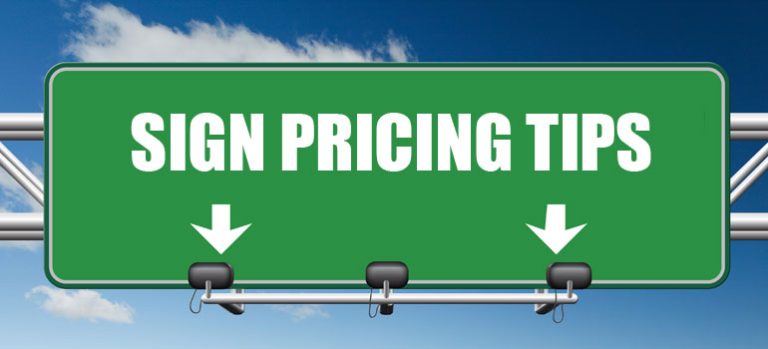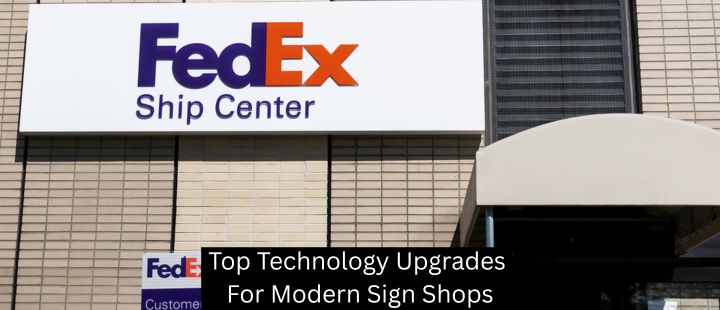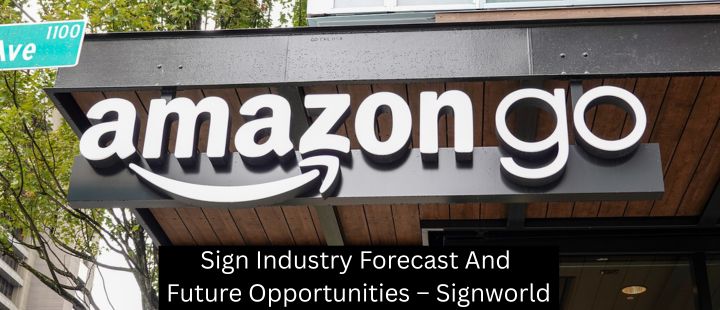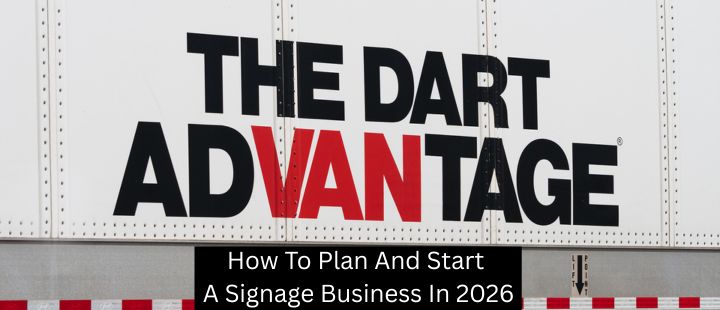Pricing product is an ambivalent part of sign business ownership. While it can be a lot of fun to imagine all the profits your pricing will reap, there’s a lot of pressure to get it right. Pricing your signage too high will drive off buyers and potentially damage your local reputation, whereas pricing too low will eat into your ROI and devalue your product in the eyes of the customer.
At Signworld, we don’t believe in handcuffing our franchisees with strict rules, but rather empowering them with the knowledge they need to decide what’s best for their business. With this in mind, we’ve gathered some pricing guidelines, tips, and best practices here to inform your decision-making process. And there’s good news: it’s a pretty simple process!
Sign Pricing Basics
You don’t need a degree in economics to nail your sign pricing.
Price is a function of supply and demand. Quite simply, the price of your sign should represent the intersection between the market’s supply and demand.
Of course, calculating supply and demand is easier said than done. These are rather abstract terms that incorporate study of political, economic, and social developments, none of which you’ll really to spend time learning about to run a profitable sign business.
Instead, we propose two simple pricing methods that incorporate the basic economic concept of supply and demand.
Simple Pricing for Beginners: the Labor + Material Method
This simple formula can be used to price any sign, regardless of style or size.
The “Labor + Material” method involves first adding a markup to the total cost of materials used to produce the sign. Doubling the cost of materials is standard practice for sign pricing markups.
Once you’ve arrived at this number (material cost x 2), you’ll need to estimate the length of time required to finish the job. Aim for an “industry average” with your time estimate. Overachievers, resist the urge to offer unrealistic turnarounds – rushing to the finish line only adds pressure and eats into your profitability.
Now that you have your time estimate, you need to factor in your labor rate. Shop rates usually sit between $50-60 per hour, but it’s ultimately up to you. Just remember not to set the labor rate too low, as it’s not just your labor the clients is paying for – your computer and cutter “labor costs” need to be covered, too, as more work requires more maintenance.
So this method boils down to a simple formula: material cost x 2 + total hourly labor rate.
This method is particularly effective for intricate work where considerable labor time is required. Moreover, so long as you’re open and forthright with the client from the first consultation, it’s an extremely fair form of pricing for both sides. The client will have the option to scale down their final cost by adjusting the quality of materials or the intricacy of the design, and you’ll always be fairly compensated for your work.
Learn more about sign pricing and business ownership at Signworld
Finished the article and still haven’t found your answer? Don’t stress – log into the owner’s domain and get some individualized assistance. Alternately, if you haven’t joined the team and want to learn more about our business model, you can request additional information for no cost or commitment at http://www.signworld.org.




